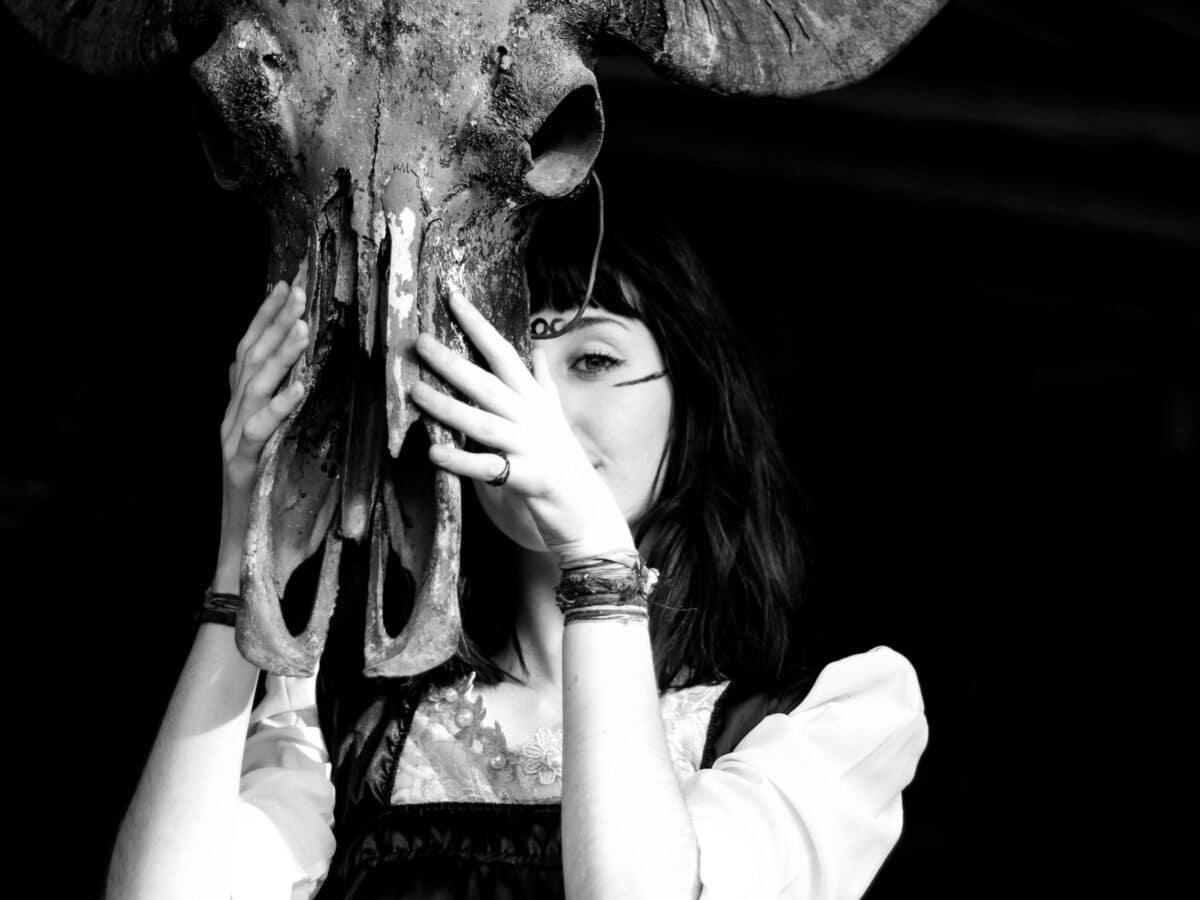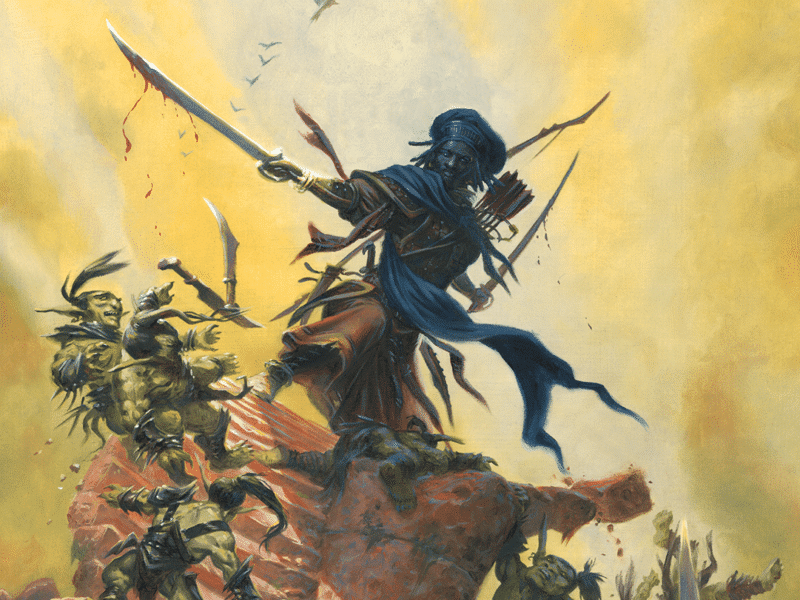Near the end of May 2023, Midnight Tower launched a new Kickstarter campaign for an adventure for the fifth edition of Dungeons & Dragons. This is our ninth Kickstarter in the span of roughly three and a half years, and it’s still as thrilling and exciting as when we started back in late 2019.
Over these few years, we’ve learned a lot about how to plan, prepare, run, and fulfil Kickstarters. Through experimenting and lots of reading, we’ve discovered things, approaches and actions that can be time-saving and generally helpful. In addition, we’ve also made a whole bunch of mistakes.
In this article, we’ll share a range if ideas and examples of how we run our campaigns in case you’re interested in setting up your own! Or you might already be a Kickstarter creator who’ve launched several projects, in which case you might find some of the below examples interesting.

More like Miniscule Tower
Midnight Tower isn’t a large operation by any means. In fact, we’re really tiny compared to most others who run crowdfunding projects! We’re essentially a team of two, and we do a lot of other things besides working on our adventures, so we usually end up using pretty much all our free time on the D&D adventures that we write under the name Midnight Tower (we came up with the name because lots of the writing and drawing takes place in our tiny loft, and often after midnight!).
For creating the actual books, we also work with a group of extremely talented freelancers, such as concept- and portrait artists, map makers, proofreaders, playtesters, and artisans who design the custom items for our Collector’s Edition boxes. However, all the writing and much of the artwork is created by the two of us, and also everything that’s got to do with setting up and managing a Kickstarter campaign.
And we’re still learning with every new campaign! Besides, the hobby is in constant transformation, with changes to the D&D core rules underway and lots of online platforms currently in the works, so we’re spending quite a lot of time talking to other creators, This means that we need to choose what we do and plan every step carefully, or else we might run into delays, unforeseen complications, or unexpected bottlenecks,. Here’s how we went about setting up our current campaign for The Mystery of the Cursed Statuette, a new detective adventure for D&D 5E.
Figuring out what to create
Our very first step is to decide exactly what kind of adventure that we’re going to write. We have way more ideas than we have time – in fact, we estimate that we have enough outlined adventures to last us another 15 years or so! We’re creating adventures because we love playing D&D and are incredibly invested in Eastern Farraway, the fantasy world that we’ve worked on for over 25 years, so our adventures are always based on ideas that originate in our roleplaying.
Once we’ve chosen an idea that we’ll like to turn into book, the next step is to start figuring out the adventure’s structure, what to include, and which notions that will have to be left aside. Because we tend to have so many ideas, it’s easy for a small one-shot adventure that might use fifty pages to grow out of its cage into a lumbering beast of a campaign that requires three books. So we always (well, almost always) make sure that we have a good understanding of what the adventure will be like and how many pages it will require, and then stick to our plan. Unless, of course, we suddenly have a new idea that’s so good that it simply must find its way into the story, in case we do our best to do so.
For anyone who feels that it’s a challenge to ignore or cut out parts that they like, here’s a tip: add them to a different document that’s used only for collecting loose ideas. That way, you haven’t tossed them out entirely – they’re just waiting for the right moment to end up in another adventure!
First things first
It’s essential to start on the right part at the right time, so that we don’t find ourselves with a finalised manuscript for a new trilogy only to realise that we’ve forgotten to commission the cover for the book. When doing this, we also need to keep in mind that the artists with whom we work are in high demand and can have very busy schedules. There are also holidays, long and short, as well as large-scale events (country-wide strikes, global shipping chaos, Olympic games, presidential elections, and so on) that can cause hiccups or serious delays.
It’s much like cooking, really – starting with the parts that’ll take the longest, and waiting with the bits that take less time to do!
Getting the word out
We’re far from experts at marketing ourselves, so we’ve tried (and we keep trying) all kinds of different ways to get news about our Kickstarters out to those who might be interested in upcoming D&D adventures.
In general, we do a lot of social media around the campaign, with daily posts on Twitter, Facebook, and Instagram. Most of these posts feature sneak peeks of our work in progress, updates on the book in general, and details about the campaign. Recently, we’ve also teamed up with an agency that (in difference to us) really knows what to do when posting information about the campaign on Facebook and Instagram.
Many of our posts also feature cats. We’re not sure why. Actually, we are – we love cats, and at least one of our cats is often found sitting on our desks and supervising our work.
Communication
We talk to our backers a lot to keep everyone up to speed with how the book is coming along, show previews of what we’re working on at the moment, and let them if there are any hiccups. Our backers put their trust in us (thank you!!!), and it’s their support that makes it possible for us to create the book in the first place, so we think is incredibly important to let them know how the work on their book is progressing. For this reason, we usually send out a lot of updates during the campaign, and a weekly update after the campaign has ended – all the way until the book has been sent out. And we’re always at hand to answer questions, big or small!
In addition to this, we ask for feedback on our plans and ideas in our updates. Lots of our backers are experienced D&D players or generally creative (or both), and by asking for suggestions, you can receive tons of brilliant In addition, we regularly run polls during the Kickstarter campaigns about what content to include in the compendiums that we add to the books.
Sending out the rewards
We don’t want anyone to wait longer than necessary for the adventure that they’ve pledged for, and as we include the PDF version with all our D&D books that are crowdfunded, we usually send out the PDF version of a new adventure to everyone as soon as it’s ready to see the light of day. The printed versions, however, are fulfilled through a different process. There are several key steps to consider when handling physical books, and many different options are available for getting them to the backers.
There are two main ways to print a book: through print-on-demand or by using offset printing. Both methods have their advantages and disadvantages, and it’s worth exploring all the pros and cons before choosing as every creator and project is different. Print-on-demand means that the books are made quickly and usually in a limited number, which allows them to be distributed quickly. The downside is that they’re quite expensive, and the options for various types of printing can be limited. In contrast, using offset printing means access to more options, and they’re usually less expensive. However, to keep prices down, many use offset printers located far from the majority of the recipients and which may have long job queues, which in turn means that it can take a long time before they land in their recipients’ mailboxes.
We’re using print-on-demand for all our D&D books as it has enabled us to get the adventures out to our backers as soon as possible. The printer we’re using has facilities in multiple places, which cuts down the waiting time even further. We’ve also worked with them for a very long time and have a good understanding of their requirements. That said, the world of printing, especially when it comes to modules for Dungeons & Dragons and other roleplaying games, is changing incredibly quickly right now, so we’re constantly keeping an eye on new opportunities to make our books reach backers faster and turn out even better-looking.
Shipping
A hugely important part of the fulfilment is shipping, as making mistakes when calculating it can result in big complications and unforeseen costs. It doesn’t help that the prices of shipping can change quickly and with little notice, or that shipping to two adjacent countries can differ in price by a lot. So we’d recommend that you check shipping costs to all regions, and take into account different combinations of items (such as one or more add-ons.
Lastly, make sure that you check if there’s a VAT expense that you also need to factor in! We won’t go into VAT here as it’s a whole topic of its own, but we recommend that you read up on what applies to your situation.
Those are a few points that give you some insight into how we run Kickstarters for our Dungeons & Dragons books! Maybe there’s an adventure or other D&D module that you’d like to write and launch a crowdfunding campaign for – in that case, we hope this article has been helpful!







